Spectaculars by Selachian
Spectaculars comes in a big heavy (and, at $75, expensive) box containing
Original SA post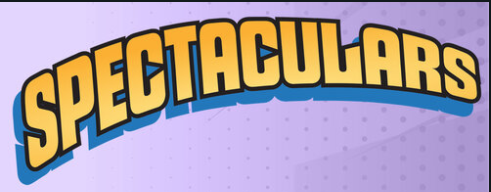
Spectaculars is a supers RPG by Rodney Thompson's Scratchpad Publishing. It's a lightweight system that emphasizes casual drop-in play, with fast character creation, minimal GM prep, and short scenarios that can be resolved in a single session. In this, it's very similar to Scratchpad's Dusk City Outlaws.
Spectaculars comes in a big heavy (and, at $75, expensive) box containing:
- six character trays, which are quite nicely designed and hold all the sheets and cards you'll need for your character
- one sheet of punch-out markers
- a whole lot of cards
- a bag of dice
- five pads: one pad of character record sheets and four series pads (Explorers of the Unknown, Eldritch Mysteries, Streetlight Knights, and Clash Among the Stars)
- two 60-page booklets, the Rule Book and the Setting Book
To start playing, you pick one of the series pads. Explorers of the Unknown is traditional four-color superheroing in the Avengers/JLA/Fantastic Four style, with an emphasis on high-tech villains, Eldritch Mysteries is magic-powered supers, Streetlight Knights is street-level crimebusting, and Clash Among the Stars is for space-based heroes like the Guardians or the Green Lanterns.
The first couple pages of the series pad are team options. Players choose one and fill out checklists -- this game has a lot of checklists -- to determine the team's backstory, how they got together, what sort of resources they have, and such. For example, the options for a Streetlight Knights series are Wards & Mentors (everyone on the team was recruited and/or trained by the same person, such as the Bat Family, or Team Arrow) or Neighborhood Watch (the team has come together to clean up their part of the city, like the Netflix Defenders or the Birds of Prey). These sheets are used to track who's a member of the team, as well as the team's reputation in three areas (Public, Media, and Government).
Next on the series pad are six Archetype sheets. Each Archetype sheet offers checklists for the character's origin, vulnerability, Resistance (see below), and how they get around the city -- i.e., whether they use their powers, have a swing line, have a vehicle like the Blackbird or a Quinjet, or whatever. The Getting Around entry is meant mostly to establish how your character arrives on the scene -- it's not meant to substitute for actually having powers like Flight or Teleportation, and it's up to the narrator to enforce the difference. Each Archetype also has a special ability to set it apart from the others., and a list of potential personality traits to choose from.
Most Archetypes have 100 Resistance (hit points), but it's up to the player to define what form their Resistance takes: it could be a force field, armor, ability to dodge, or sheer willpower and toughness. The fact that a spandex-clad Vigilante and a steel-encased Power Armor Pilot have the same Resistance may give simulationists hives, although powers like Armor or Super Toughness can also play a role in how long you can stay in a fight. At 0 Resistance, you're out of the fight, but all Resistance is recovered at the end of each fight.
Here's an example of an Archetype sheet, the Avatar from Eldritch Mysteries (front and back). Note that every hero and villain Archetype has several examples of "real" comics characters that fit that Archetype, which can be handy when figuring out what you want to play.
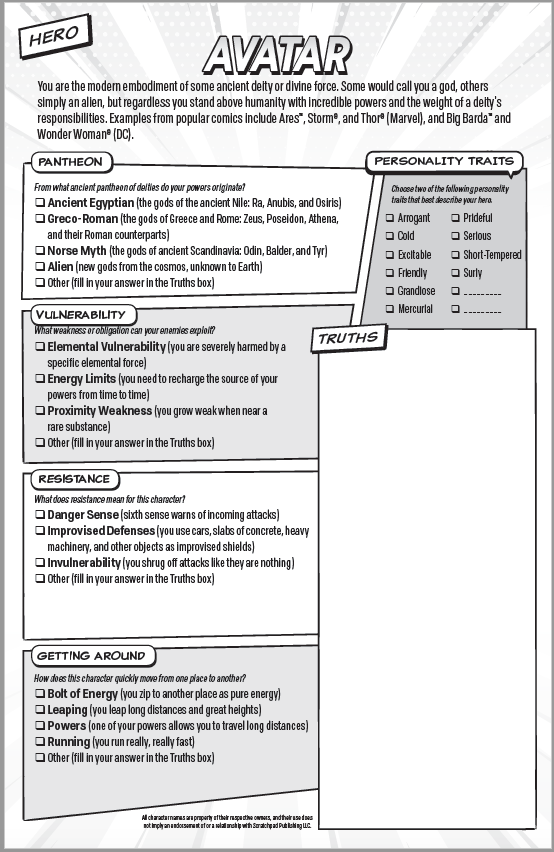
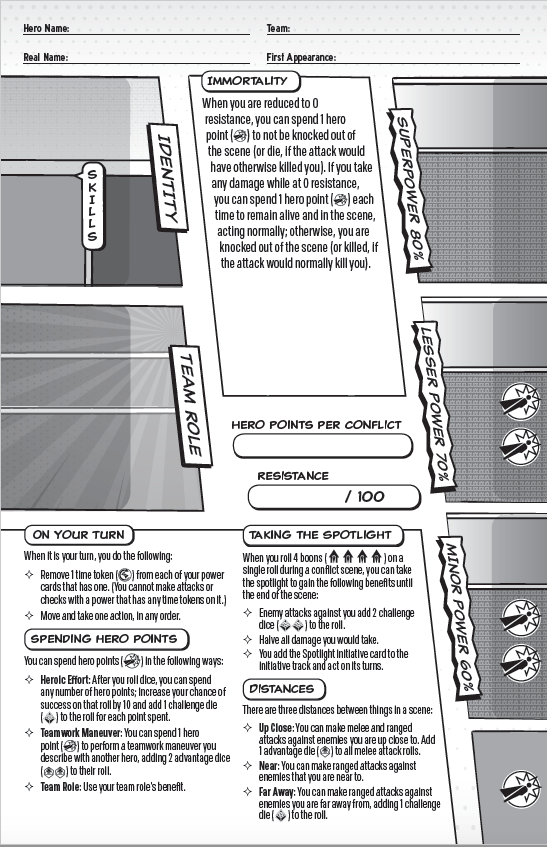
Once you've picked your Archetype, it's powers time
Original SA post
Once you've picked your Archetype, it's powers time. The game includes a 25-card deck of Common Powers, which can be used in any series, and a 15-card deck of powers for each series pad. The narrator (GM) shuffles the common powers and series powers together, and each player draws five powers. You can keep up to three for your character; if you keep fewer than three, you get extra Hero Points per fight (about which later).
There's also a deck of Basic Power cards. You can, if you wish, replace any of your power cards with basic powers: Flight, Super Strength, Super Toughness, Energy Blast, or Signature Weapon. Basic Powers are more one-dimensional than powers from the deck, and you get an extra Hero Point for taking one.
You then arrange your power cards in order of priority: the first power is your Superpower (80% chance of success); other powers are your Lesser Power (70%), and Minor Power (60%).
After powers comes Identities: who you really are, and what your skills are. Again, there are 25 Common Identities and 15 series-related identities for each series; the narrator shuffles the common and series identities together and each player draws three, keeping one. Each identity card has a list of skills, and some questions to use as prompts when you're writing your backstory.
To finish character creation, you select (not randomly draw) a Team Role card, which defines the main way you contribute to the team and gives you a special ability that you can invoke by spending Hero Points. If you're a Tank, you're good at taking hits; Artillery and Strikers can pile on damage; Leaders and Boosters can enhance other characters' abilities; and so on.
You get at least one Hero Point per conflict, and more if you've taken fewer than three powers or if you've switched any of your powers for a Basic Power.
Here's an example of character creation. Let's say we're playing Explorers of the Unknown and I've chosen the Construct archetype (i.e., an android, cyborg, robot, or what have you).
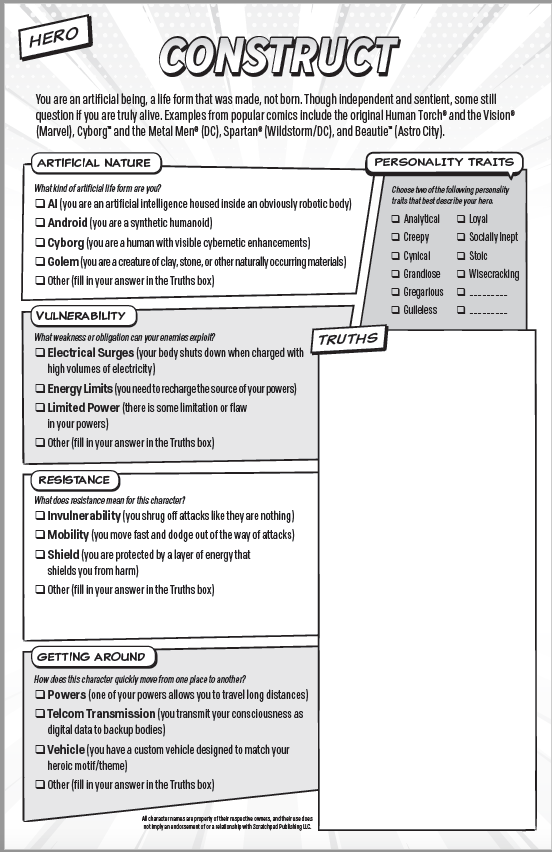
My power draws are:
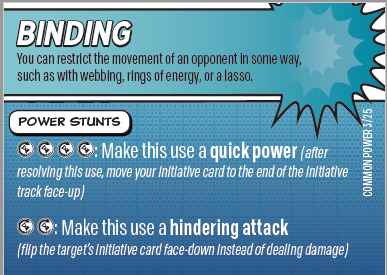
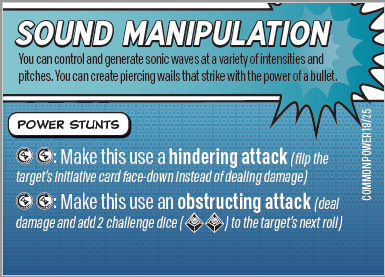
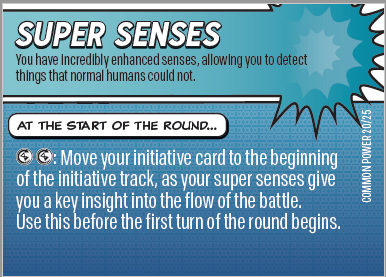
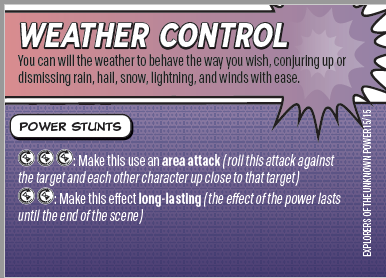
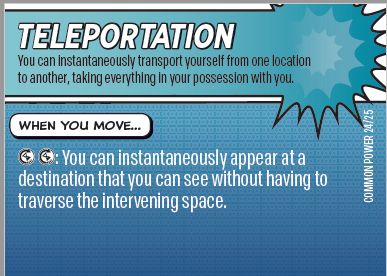
Weather Control seems like a weird choice for a construct, but I could pair it with Super Senses: I have the power to sense and alter the local microclimate to produce freak weather at my command. Just call me … Chaos Butterfly! I'm a weather-monitoring AI that has achieved sentience and learned how to not only measure, but manipulate, the weather.
I could also take Binding if I wanted to be able to trap enemies with powerful winds or blocks of ice, or toss it in favor of Flight from the basic power deck, since it seems natural for a weather controller to be able to fly. Or I could just stick with two powers and take an extra two Hero Points.
My identity draws are:
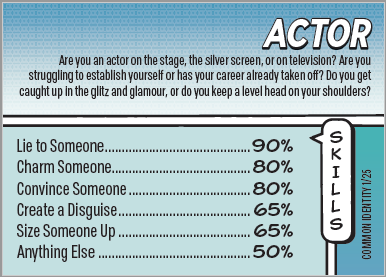
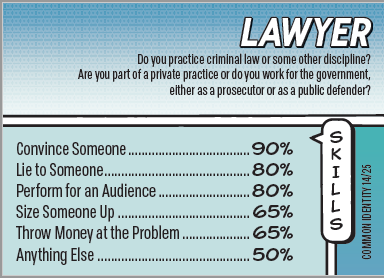
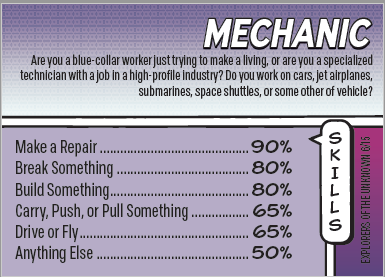
Anyone who calls themselves Chaos Butterfly is probably flamboyant enough to be an Actor, so I'll go with that. Clearly Chaos Butterfly has been drawn to the stage as a way of experiencing as many human emotional states as possible...
On the other hand, I notice that Telcom Transmission is one of the options for Getting Around on the Construct character sheet. Hmm … Teleportation, Sound Manipulation, and maybe Super Senses – I could be the Phone Phreak instead! Or I could go with Binding, Super Senses, and Super Strength from the Basic Powers deck and be a knockoff Spider-Man.
Okay, you got any better ideas? No, seriously, if you can come up with something better based on those draws, I'd love to hear it.
Backstory can wait – Spectaculars wants to keep character creation simple so you can jump into play quickly, so it recommends not getting too tied up into origins and such until after you play the first issue.
You may notice that the power cards only give the broadest description of each power, without any definite benchmarks. Spectaculars doesn't really care about setting numerical limits on powers; it's up to the player and narrator to define what a character can do with their powers. Signature Weapon, for instance, can cover anything from batarangs or Daredevil's billy club to Mjolnir. The series you're playing can also help define your powers as well. In a Streetlight Knights series, someone with Super Strength might be closer to Jessica Jones or Thunder from Black Lightning, but in an Explorers of the Unknown game, Super Strength might be on the level of Wonder Woman or the Thing. This level of abstraction isn't for every group, but if you're used to lighter supers games like Masks, you can probably make it work.
While this method of character creation is fast and surprisingly fun, sometimes you do get a draw that just doesn't make sense for your Archetype, or doesn't inspire any ideas. And there are some corner cases – what if your Power Armor Pilot doesn't draw the Armor power, or your Speedster doesn't get Super Speed? It does require some flexibility on the narrator's part, and it's an optional rule to do away with random draws and just allow the player to pick the powers they want. I enjoy the random aspect – I find it can prompt interesting ideas that I normally wouldn't have thought of – but random, or even semi-random, supers generation isn't for everyone.
Also, Spectaculars doesn't expect you to play the same character for an entire campaign. If your character turns out to be a dud, you can always create a new one next session, or bring back an old one that no one's using.
With character creation out of the way
Original SA post
With character creation out of the way, we turn to the Setting Book. This book includes a list of all the various common setting tropes and NPC types for a supers campaign, with more checklists for each: The Super Prison, The Megacorporation, The Dystopian Future, etc. Here's a typical Setting Book page:
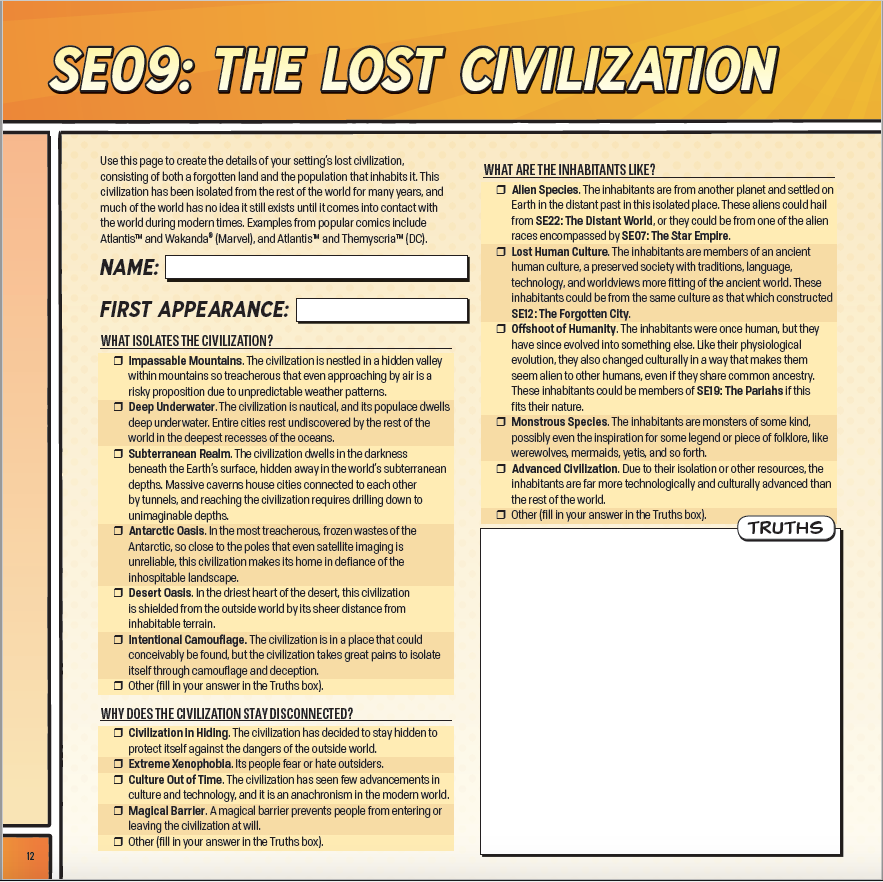
These can be filled out by the narrator alone, or collaboratively by the narrator and players. You don't need to fill out the entire book at once, however. At the start of the series, you fill in the first couple of pages, called The Basics, which include details about the city the campaign takes place in and important landmarks, how common supers are and how they're viewed, and how lethal super-powered combat is.
Then, as the game goes on, if you need details on The Super-Science Lab, The Hero Academy, or The Team Mentor, you can turn to the appropriate page and fill it out; there are also spaces on each page to record events involving these places or people. This takes up about two-thirds of the book; the rest of the book is record sheets for noting details on minor NPCs and important events from each issue you play. So as you play more and more games, the Setting Book will gradually fill up with details about your particular Spectaculars universe.
Each series pad includes about a dozen issues (scenarios) to play, as well as villain Archetype sheets to help the narrator come up with villains for each issue. There are frequently multiple villain options for a particular issue, which helps the narrator to customize each game even further. Despite my earlier grousing about the price, you do get quite a lot of content for your 75 beans. There are also some further hero archetypes buried deeper in each series pad; these Archetypes are intended to be unlocked by playing certain issues. For example, playing the Alien Invasion issue in Explorers of the Unknown makes the Alien Refugee hero Archetype available to players. However, there's nothing stopping you from declaring that all Archetypes are available at the start, or bringing Archetypes from one series into another.
As for the gameplay itself, Spectaculars uses a percentile system: you say what you want to do and roll the appropriate power or skill rating. Depending on what you're trying to do, the narrator can also add up to four advantage dice (d8s) or challenge dice (d10s) to the roll. Advantage dice are given out for using the environment in a clever way, doing something particularly entertaining, or exploiting something you've learned about the opposition; challenge dice are used when circumstances are stacked against you. You can get both kinds of die on a single roll, and the rules urge the narrator to be generous in handing them out.
The game includes custom advantage and challenge dice; the advantage dice are marked with symbols on half their faces, the challenge dice on six faces. Each die that comes up showing a symbol gives you a boon (advantage) or drawback (challenge). You can, of course, use regular d8s and d10s, so you're not required to also buy special dice if you get the digital edition.
Details of boons or drawbacks are up to the narrator to adjudicate, although there are lists of possible effects for inspiration. The more you get, the more beneficial or severe the result should be. Boons can include knocking an enemy back, doing extra damage, giving another player advantage dice on their turn, learning a secret about the situation, achieving a secondary goal in addition to what you were trying to do, healing some Resistance, and so on. Drawbacks can mean putting yourself in a bad position, taking damage, or having to draw from the Deck of Complications.
You can also spend Hero Points during play to increase your chance of success (1 hero point = +10% chance, but also one extra challenge die) or do a team maneuver with another hero to give them two advantage dice on their roll. One thing I like is that team maneuvers don't require an action – you just explain how you're helping and pay the Hero Point. This helps encourage creative thinking and teamwork.
While this system is quick and easy to learn, it does put a lot of weight on the narrator to keep the advantage and challenge dice flowing and come up with interesting boons and drawbacks. At times it can feel like early stunt-based systems like Feng Shui or Exalted, where you end up adding a bunch of unnecessary flips to a straightforward attack to get those extra bonuses.
Since this is a supers game, combat is a frequent occurrence
Original SA post
Since this is a supers game, combat is a frequent occurrence. Initiative is handled via cards – each hero gets one card, as do most minor villains and minion squads. Major villains can get two or more cards. The narrator gathers the cards for everyone involved in the scene, shuffles them, and deals them out in a line, and then initiative goes along the line left to right. Some team roles and powers allow the players to readjust the initiative track once it's been dealt. At the end of each round, the narrator shuffles and re-deals the initiative cards.
When your card comes up, you can move and take an action. Spectaculars uses 13th Age style ranges: you can either be Up Close to something (close enough for melee attacks), Near (close enough to hit with a ranged attack, or a big weapon like a telephone pole), or Far (ranged attacks only). Moving from one range to another requires a single move action.
Actions can include taking a second move, attacking with a power, or using a skill. You can attack with any power unless it specifically says you can't use it offensively, as long as you can justify it. Want to attack with Flight? Describe how you're dive-bombing the enemy. To attack, you roll against a power's rating, and if you successfully hit, the damage you do is equal to your roll, possibly modified by boons or drawbacks. Yes, that means your superpower (80% chance, remember) can do anywhere from 1 to 80 damage.
Opposition comes in the form of major villains, minor villains, and minions. Major villains have multiple initiative cards, usually one per player, and 100 Resistance per initiative card, and may have several powers as well. Minor villains usually have just one power and/or attack and one initiative card, and 50 or 100 Resistance.
Minions are a special case: they come in squads rated for size from 1 (a few henchmen) to 10 (hordes of flunkies), and each successful hit on a minion squad reduces its size by 1 regardless of how much damage you roll, although boons, team roles, and Archetype abilities can increase the number of minions taken out at a time. A minion squad's maximum damage is equal to its size x 10, no matter how high it rolls to attack.
If you look back at the power cards from the character creation post, you'll see that most powers have special benefits and/or power stunts that can be invoked by placing Time Tokens on the power card. These can include hitting multiple targets, doing extra damage, getting an extra action, and so on. However, once a power has Time Tokens on it, it cannot be used again until all the tokens have been removed. At the start of your turn, you take one token off each of your powers that has one. Only heroes can use these benefits – villains don't get them even if they have a power drawn from the deck. This helps keep things simple for the narrator when running multiple villains.
This is a fast, almost too fast, and swingy system; it's entirely possible for a lucky roll to knock a minor villain out in one hit. If you let the players just stand toe to toe and slug it out with the villains, fights can be quick and boring. But including Complications and Objectives helps make things more interesting.
Besides the villains, most Spectaculars fights include a variety of Complications and Objectives that are meant to distract the heroes from just punching villain face. Maybe there's a helicopter crashing, maybe the villain has seeded the area with bombs that need to be found and removed, maybe the villain's henchmen are looting the bank vault while you fight. Each Complication or Objective has a row of boxes, usually one to three. If a player acts to take care of the Complication or Objective and makes a successful power or skill roll, one box is checked off. Once all the boxes have been checked off, the situation has been successfully resolved.
Each successful roll to progress a Complication or Objective earns the player one Hero Point, and completely resolving one can provide other benefits, such as a boost to the team's Reputation. However, some Complications, such as the crashing helicopter, are Critical: they get an initiative card, and each time their card comes up, the narrator crosses off one of their boxes. If more than half of the boxes get crossed off, the Complication ends in failure: the helicopter crashes, and videos of you muffing the catch are now all over YouTube. There are also opposed Objectives, such as the example of villains looting a bank vault – for these, both sides have a success track, and the first side to fill all the boxes in theirs succeeds.
The game also includes a Deck of Complications that the narrator can draw from if a player rolls too many drawbacks, or if a fight just needs something to pep it up.
In between fights are what are called Interlude scenes. These are mostly handled by freeform roleplaying with the occasional power or skill roll as necessary. Each player states their goal during the Interlude: e.g. track down the villain's lair, investigate the strange doohickey they found, or work on their Aspiration or Turmoil (about which more later), and based on this the narrator creates a situation to play through.
Most issues will consist of a fight or other dramatic scene, an Interlude, and then a bigger fight at the end, so it's easy to play an issue in a single session. The pattern of fight-freeform Interlude-fight shows a clear influence from Marvel Heroic Roleplaying, but that's hardly a bad thing.
After the first issue is completed
Original SA post
After the first issue is completed, the players are encouraged to write down an Aspiration and a Turmoil for their hero. An Aspiration is an overarching goal for the character: “I want to find out what happened to my parents,” “I will never rest until I defeat <villain name>,” “I need to perfect the design for my Chronosynclastic Infundibulum.” Turmoils, meanwhile, are sources of drama: “I have to take care of my sick old aunt,” “My snoopy coworker keeps trying to figure out my secret identity,” “Can a being of living electricity find love in the big city?”
Creating an Aspiration and Turmoil for your character earns the team one Continuity Token. Continuity Tokens are kept in a pool for the team. They can be spent to either create a back issue (declare that your character has faced this particular enemy or situation before and you know something about how to handle them) or a retcon (create a new fact about a character, setting detail, or situation).
Character advancement is handled simply. Each character record sheet has a track:

The character marks off a box on the track each time they either complete an issue or successfully play through an Interlude scene based on their Aspiration or Turmoil. At four places on the track, the character earns a Story Reward, which can be used for a variety of benefits, including changing out one of their powers, adding a new skill, changing Archetypes, or gaining an in-setting benefit such as acquiring a sidekick, getting a new vehicle, becoming rich, or making an arch-enemy. There are even fourth-wall-breaking rewards, such as getting your own toy line, animated series, or solo comic. Story Rewards tend to broaden rather than heighten the character's capabilities; the basic statistics stay the same, and you can never acquire more than three powers. That means even an experienced hero isn't that much more powerful than a raw newbie, so you can bring a new character into an ongoing series without having to worry about keeping up.
At the end of the advancement track and the fifth Story Reward, the character retires. It's up to the player what form this takes: you can just hang up the cape, step back to become a team mentor or leader of an agency, be lost in an alternate dimension, die heroically, or even switch sides to become a villain. Retiring a character gives you an origin bonus on your next character, such as getting extra Hero Points or being able to choose instead of randomly draw some of your powers.
And that's the rules. The remainder of the Rules Book is a set of random origin generation tables for heroes, and advice for the narrator on how to run the game, as well as how to create your own issues and series, and some optional rules such as non-random character generation.
I'm not completely sold on Spectaculars -- I like a little bit more crunch in my supers systems, although not to the point of Hero or M&M. But it's an excellent resource to have if you ever need a quick, easy change of pace for your game group, or something to run a fill-in session with very little prep and rules-learning effort. And some of the game tools, such as the Setting Book or the Deck of Complications, can be useful even for supers games using other systems.